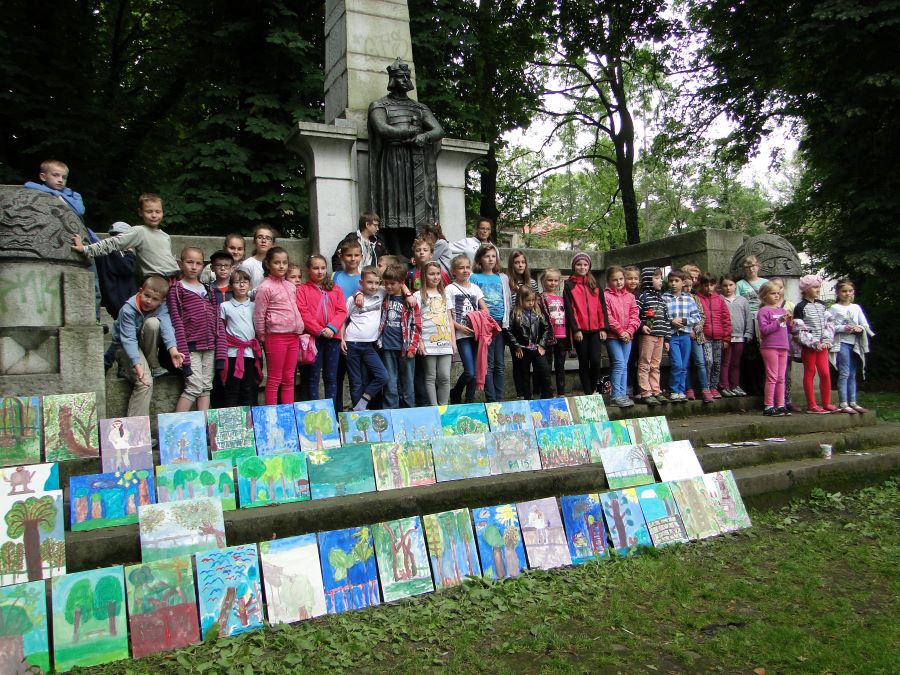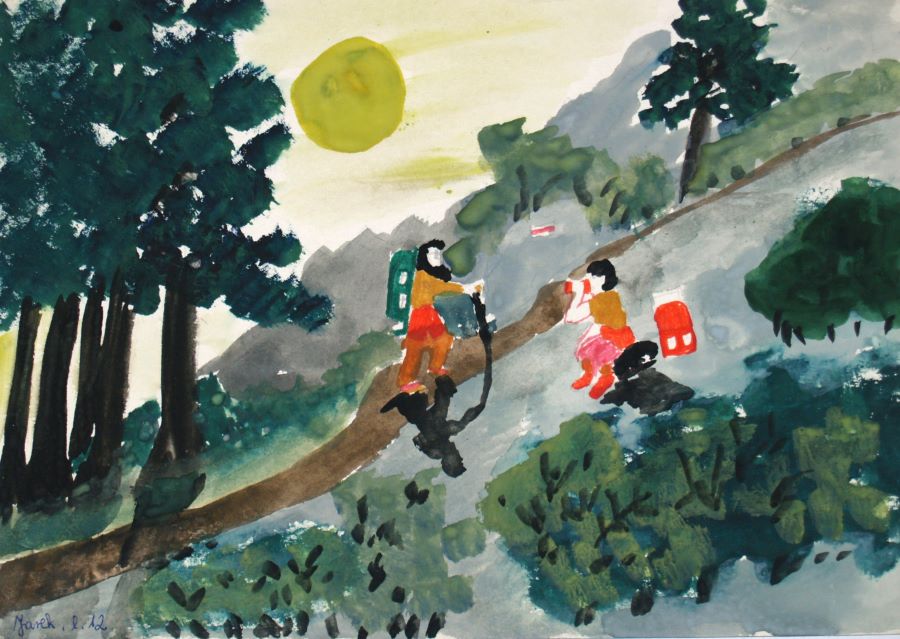Good education is based on art, visual art and music education. It develops creative thinking in children, supports their intellectual, emotional, and social development, and plays an important role in learning about the world and oneself. What were the beginnings of art education in Poland and what is it like now?
Contact
Prof. Urszula Szuścik from the Institute of Pedagogy at the Faculty of Art and Educational Science of the University of Silesia – [email protected]
| Agnieszka Sikora, PhD |
Art education plays an important role in children and young people’s educational process. It is crucial in developing imagination, creativity, communication skills, problem-solving skills, and self-expression through various artistic media such as drawing, painting, photography, music, and dance. Through art, children learn to express their thoughts in an original and unique way and to relate to their environment. Prof. Urszula Szuścik, an educator, psychologist, and visual artist from the Faculty of Arts and Educational Science of the University of Silesia in Katowice, talks about the challenges of art education.
Art education – the beginnings
The beginnings of art education in Poland date back to the reign of Stanisław August Poniatowski, i.e. the second half of the 18th century. Prior to that, art was treated as a craft, and art teaching in schools was rare. It was conducted only in certain types of schools, usually on an optional basis, and not as an element of children’s formal education.
In the second half of the 18th century, fine arts, music, and theatre enjoyed growing interest in Poland, and the artistic community was developing steadily. The artistic community in Kraków, later also in Warsaw, played a significant role in the development of artistic education. However, this initially informal teaching of fine arts did not involve art education being included in school curricula. Even later, the so-called drawings were not a compulsory subject. The role of art in the education and upbringing process was only recognised in the 19th century. This was due to the development of pedagogy as a separate scientific discipline, among other factors. At the end of the 19th century, the interest in research on children and their artistic endevours increased, and the first studies on their development, upbringing, and the formation of attitudes were initiated.
The 20th century saw intensive development of children studies. Attention began to turn not so much to shaping children in terms of their abilities, but through creative activities intended to bring out their potential. The basic principles of modern art teaching methodology began to be implemented in the inter-war period. It was facilitated by the development of psychology, as well as by the emergence of new artistic trends, such as Expressionism, Impressionism, Abstractionism, and Symbolism. All of this had a significant influence on the development of the new educational programme and the current of new education, which took into account children studies, the mechanisms of their development, and their understanding of the world.
In Poland, of note are the works of Stefan Szuman, who emphasised the role of art as that which educates a person culturally and shapes their psyche. The author believed in three basic principles of aesthetic education: availability (art should be subject to the direct influence of the audience), accessibility (educational activities generating interest and demand for art in the audience and teaching them how to look and appreciate art) and art promotion (bringing art closer to the broad masses of society by making the best works easily available and widely accessible). His understanding of aesthetic education is still relevant, even though nowadays many elements of education have been replaced by globalised modern technologies allowing for the transmission of information and images.

Good education
Education, not only art education, starts already in the family environment and continues at the next levels of education – kindergarten and primary school. Often the initial stages are downplayed and underestimated. Pre-school and early school children are characterised by a high degree of spontaneity and a desire to discover the world and acquire knowledge. Therefore, it is necessary to help them develop their creative thinking skills. Meanwhile, reproductive activities are often the predominant ones. They do not help children develop, as they do not create problem situations in which children come to solutions on their own. The basis for this process should be a well-structured teaching and learning process. Well-thought-out education promotes the development of the child and supports their intellectual, emotional, social, and aesthetic development. It is also extremely important in terms of learning about the world and about oneself.
Thus, art in children’s education should not be reduced to a tool used to illustrate the world. Art education should teach young people about the values of beauty, i.e. facilitate the development of a human being who is sensitive to all expressions of artistic and non-artistic beauty.
Good education is all about the child’s creativity. Such education consists of turning the young person’s attention to the organisation of the place of this activity, to the form of expression, and to the relationship with the environment through creative activity. It is a mistake not to create problem-solving, exploratory situations in which the child comes to solutions on their own. This is one of the most important aspects of child development, which is not at all widely recognised, even by educators.
‘Art often escapes the general discourse on child creativity. It is important that activities related to art or music are kept strictly to the use of artistic means and do not appear as complementary to other activities that are called creative’, states Prof. Urszula Szuścik.

A good musical and visual arts education puts the child’s world in order. It enables them to know what they are doing, why they are doing it, and what they want to express; they are also able to consciously use and name artistic means of expression.
‘If a child says: “This is a portrait”, I know that the child will be able to recognise a portrait even in a noneducational situation, such as a trip with their parents’, the researcher explains. ‘The idea is to pay attention to the use of language related to experiences. Of course, the child can fully understand it only at an appropriate stage of development’.
The educator from the University of Silesia points out that the problem is quite large and significant. We need to put more effort to ensure good education of the arts – visual arts, music – at school. However, all these activities require specialist teachers. Specialists in art education have a broader skillset, which gives them more options to create the aforementioned problem-solving situations for children. It is not about teaching them definitions, but about experiencing, experimenting and setting up unconventional situations for creative action, so that children can venture beyond the common patterns.
‘If it is raining, it is not enough to paint rain. You can introduce a specific technique, talk about colours, show examples from the world of art, delve into deeper issues related to colour temperature’, explains Prof. Urszula Szuścik. ‘A child will always draw something, but what is important in the course of their education is their awareness of the use of such elements of artistic language as colour, line, spatial form, texture, composition, sound, and the resulting subjective cognitive and aesthetic value. Musical culture develops through spontaneous activities, i.e. musical improvisations, singing, and humming. There are children who are trained, who go to musical mornings, e.g. at the philharmonic – these activities educate and nurture. Often times school or kindergarten is the only place where this aspect of art as a value is available to children’.

Rainbow (Tomek, 3 years old)
It is important to remember that without knowledge of psychology, including the psychology of artistic creativity, we will not offer anything close to a deep experience. The aim of pedagogical action should be to generate the child’s inner need for creativity, to encourage creative experience, and teachers should be offered a lot of curricular concepts in art education, at the same time indicating very clearly the goals and the developmental and cognitive consequences resulting from their implementation. For art education is about educating society, not about manufacturing artists.
The article entitled ‘The idea behind art education’ was published in No Limits no. 1(9)/2024, a popular science journal of the University of Silesia.






